Moules-Frites, A Belgian Grand Prix Delicacy
Welcome to Grand Prix Gastronomy! This week, I’m cooking moules-frites, or mussels with fries, in honor of Belgium.
This project is pretty simple. As a complement to each race weekend, I’ll be cooking the national dish of that race’s host country and sharing information about the process and that dish’s history along the way in an effort to grow more deeply immersed in the local culture from my own home.
What Is Moules-Frites?
I had made mussels at home exactly one time prior to starting Grand Prix Gastronomy, and I quite literally remember the day, because I just happened to be trying to make dinner as the January 6 U.S. Capitol attack played out on my television screen. I remember being distinctly disappointed by the mussels, but I am unclear whether that had more to do with [gestures widely at All That Other Shit].
Alas: moules-frites. Moules-frites (or mosselen met friet in Dutch), if you’re is the national dish of Belgium, according to none other than NATO, though you’ll also find this meal in France. In essence, it’s a big ol’ pot of mussels served with a big ol’ side of Belgian fries. It’s exceptional.
While Belgium has its own distinctive dishes, it also takes a lot of influence from surrounding countries — so you’ll definitely see that crossover with France, Germany, and the Netherlands. There’s carbonade flamande, a beef stew similar to France’s boeuf bourguignon but made with Belgian beer instead of red wine. There’s stoemp, which is mashed potatoes and vegetables served with sausage (remember stamppot?).
Belgium is one of those places that I think I recognize more for its sweet than its savory dishes. Waffles and speculoos were the two foods that very nearly lured me to take a day trip to Belgium while I was in Paris many years ago!
This Week's Recipe
I decided to go fairly simple and choose a recipe from Food-dot-com this week; I’m not totally familiar with cooking shellfish (my January 6 adventure was with a bag of precooked and frozen mussels), so I didn’t want to get too wild. This recipe includes information on what the mussels should look like when you buy them, as well as how to clean them — but I did admittedly watch a few YouTube videos just to make sure.
This recipe features the optional addition of Pernod or pastis — essentially, an anise-flavored liqueur. I had a hard time sourcing it in my teeny tiny Texas town, but I do think the flavor profile is worthwhile. Even if you don’t like the black licorice flavor of anise, you really won’t notice it, since the tablespoon you add isn’t going to overpower anything. If you really don’t like that flavor, though, you may want to omit both the liqueur and the chervil, which also features that anise-y flavor. (In fact, I’d recommend this moules marnières recipe instead; it’s pretty similar to the Food-dot-com recipe, but without all those extra additions.)
The Food-dot-com recipe does come with a recipe for fries, but I wanted to get even more specific in the preparation and therefore referred to this recipe from Allrecipes. It comes with a delicious mayonnaise-based dipping sauce called Andalouse that I had for the first time recently in a French restaurant in Montréal and have been unable to stop thinking of since. Even if you decide to throw some frozen fries in the air fryer, make this sauce. Trust me.
And, while I know that technically my fries count as this meal’s carbs, I wanted my own baguettes as well. It’s a delicious way to sop up the last of that amazing white wine sauce. However, my husband and I got distracted by a fabulous-looking sourdough garlic bread loaf at Whole Foods while shopping for our mussels, so instead of actually embarking on the baguette process, we cheated a little bit. It was worthwhile!
Cooking Moules-Frites
If you've never cooked shellfish before, I want to start by telling you not to be intimidated! It's a really simple, quick process — but I do want to give you a few tips to get you started:
Get the freshest mussels you can find! Basically, if you can get them at a seafood counter as opposed to from the freezer aisle, that's a great call.
If you can, ask the person behind the seafood counter to pick out the ones that are obviously past their prime. I'm in Texas, the mussels I was buying were from Canada. The kind gentleman behind the counter sorted through the bad mussels for me, which meant I wasn't left picking them out of my dinner later.
Cook your mussels as soon as possible, ideally that night! If you have to keep them overnight, tuck them into a bowl of ice and leave that in the fridge.
Google videos on how to wash and prepare mussels! It's really simple!
The Number One way to tell if a mussel is bad is if it doesn't open after you've cooked it. Don't try to pry it open; just discard it before serving. The quality of that mussel won't impact the rest of the meal.
Whew! Okay! Now that we have that out of the way, let's dive into the recipe!
I recommend starting off my making your Andalouse sauce, since it'll taste better if you let the flavors mingle in the fridge overnight.
If you’ve never had a chance to try a mayonnaise-based french fry sauce before, let this be your incentive to change that. You’ll mince up a tablespoon of red and green bell pepper, plus a red onion, then mix that with mayonnaise, tomato paste, fresh squeezed lemon juice, and a little bit of salt. Cover your bowl and pop that in the fridge to settle overnight, or at least for a few hours. Trust me, it’s so much better if you give it that chance to settle down.
The next day, I actually started with my fries! Peel and chop your potatoes into roughly fry-sized pieces, then let them soak in cold water for at least an hour; I prepped my fries on my lunch break, then stuck ‘em in the fridge until I was ready to cook that night.
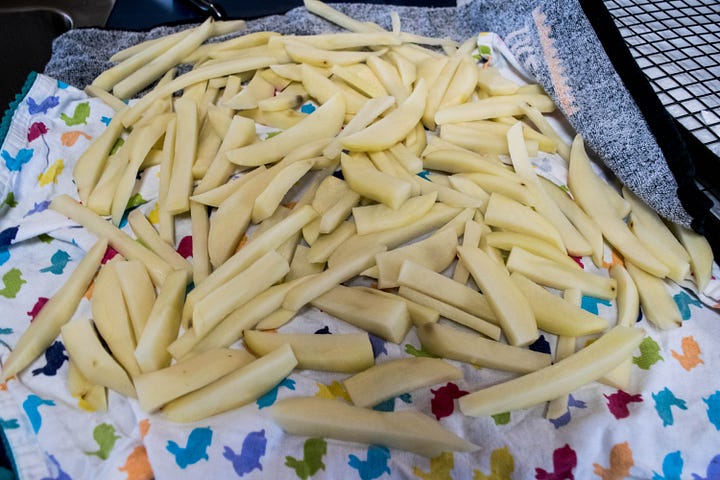
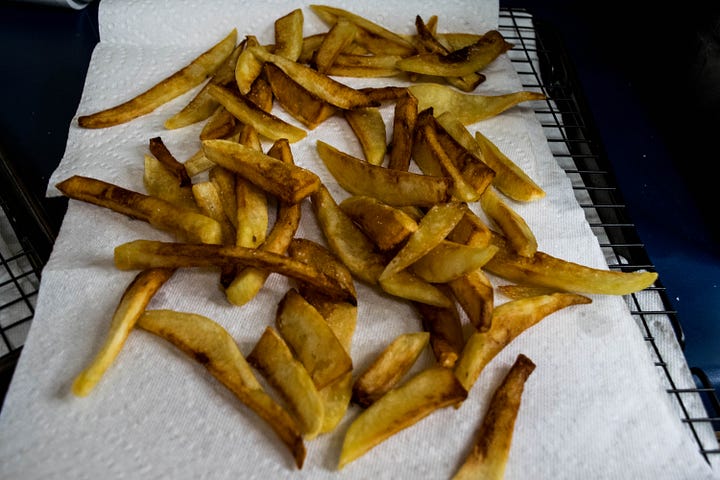
As you get ready to cook, heat your oil fryer to 300 degrees, and then rinse rinse rinse your potato wedges. You want to wash them in several different changes of water, until the water runs clear, which shows you’ve officially rinsed out all the starches. Then, spread the fries onto a towel and pat them dry.
Once done, you can pop your fries — in a few different batches — into the deep fryer, for about 5-7 minutes, or until your wedges are cooked through. Scatter them on a paper towel-lined plate or cooling rack, then let them come to room temperature.
Now you can work on your mussels! Rinse the mussels and pull off any mussel ‘beards’ that are still clinging to them (check out YouTube for help on what that looks like and how to do it!), then pop those back in the fridge until you’re ready for them. In the meantime, finely chop an onion, a shallot, and some garlic cloves, then sweat them in a pan. “Sweating” basically just means you want to cook the onion until it’s translucent and soft, but not so much that it changes color.

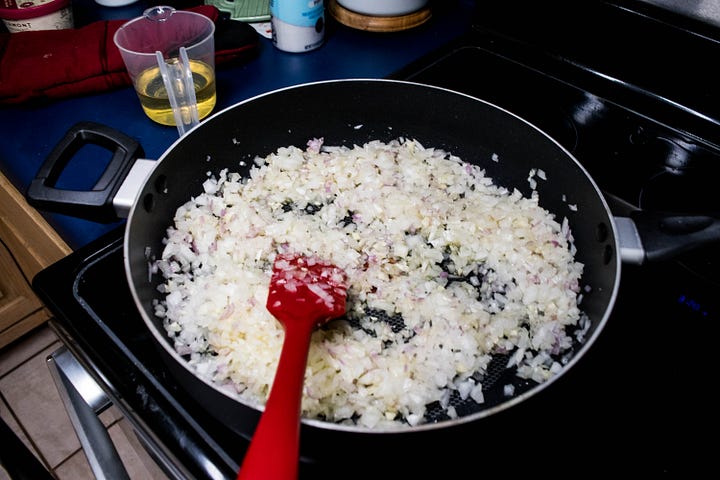
That done, stir in your herbs — thyme, parsley, and chervil, or thyme and fennel if you’re me and couldn’t find the requisite fresh herbs anywhere — and your Pernod. Then, pop the mussels in, cover with some dry white wine, and bring to a simmer, stirring occasionally. You’ll know your mussels are done when they pop open.
While the mussels cook, finish up your fries. You’ll heat your fryer to 375, then drop your fries in for a few minutes to crisp up. When they’re done, let them drain again, but immediately sprinkle them with salt and pepper.
When the mussels are just about done, stir in a little bit of creme fraiche, which goes a long way in adding a little acidic bite to your meal. (If you aren’t able to find creme fraiche at the store, try a little yogurt, or a spritz of lemon juice.) That done, serve your mussels in a big bowl alongside a heaping pile of fries, the andalouse sauce, and your choice of bread. I served my dinner with a Chablis, a white wine that makes for a great pairing with seafood. My husband opted for Delirium Tremens, a Belgian ale.
So, What's the Verdict?
The success of this recipe has convinced me I’m invincible.
Okay, not really. But it has definitely alleviated my fears of cooking seafood at home — specifically shellfish. I got my first taste with my paella for the Spanish Grand Prix, but the moules-frites was a different story. This time, I knew to ask my fish counter salesman to help me find the freshest mussels, so I didn’t suffer from tons that failed to open; in fact, I think I discarded two mussels out of the whole two-pound batch. They were so simple to make and prepare, and so friction’ delicious when they were done.
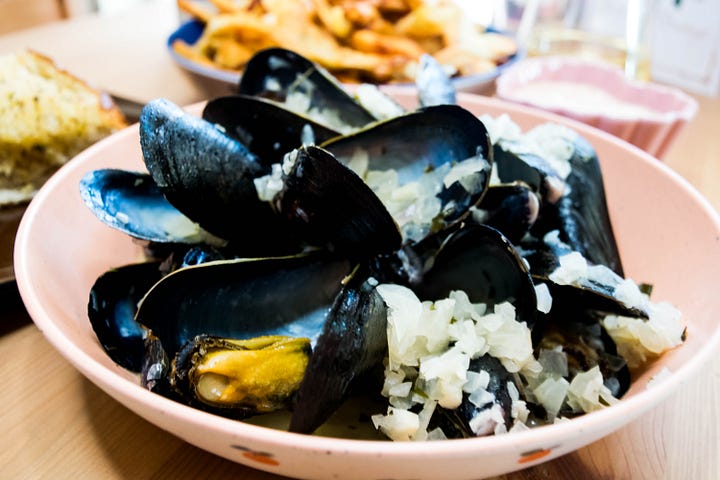

I will say that I was a little iffy on the white wine sauce the mussels cooked in. I did like it, but I think I added too much wine in my fear of not having enough. You really only need a little bit of wine to do the job; at that point, it’ll cook down and preserve the flavor. I added a lot more thinking I didn’t have enough, then didn’t balance out the sweetness of the cooked-off wine appropriately. I’ll give it a shot again and see if I can do better on round two — otherwise, I’ll try my hand at a whole new sauce!
And, my god, the fries. If you cooked along with me for the Canadian Grand Prix, then you’ll know how frickin’ jazzed I was about my poutine fries, and my second attempt was even better. I knew what I was doing this time around, but my peanut oil was also used. Apparently, a cooking oil that’s been used for deep frying a few times is better than a fresh one, since it adds additional flavor — and I’d made Nashville-style hot fried chicken a few nights before the fries. It absolutely whipped ass.
I was really pleased. I feel like I redeemed my January 6 mussel cooking debacle and transformed it into a memory more akin to the one I forced the very first time I had moules-frites. Then, I was 19 years old in France with truly no idea what to do. I’d never had shellfish before. My waiter laughed at me as I waltzed into an empty bistro well before lunch time and ordered my massive pot of mussels. Then, when he realized I fully intended to crush those bad boys, he sat down to chat with me about my perceptions of France. It was a lovely, soul sustaining moment. Maybe my homemade moules-frites weren’t quite as transcendent, but it was just as satisfying to my soul.
Let's Chat! I Went To Iowa
Listen, I try to keep GPG pretty specifically F1 focused, but this past weekend, XPEL invited me out to Iowa Speedway to watch the Indy Car race — and I know it's going to sound a little goofy, but it was an absolute dream come true for me. But let me explain!
Many a year ago, as I was first really getting into motorsport, my good friend Zooey told my friends and I that if we liked goofy motorsport people, we should watch IndyCar. Then, she sent a whole slew of videos of these drivers, particularly Josef Newgarden and James Hinchcliffe. One of those videos was called Drivers of the Corn, and it is… pretty much what it sounds like. As a promo, Newgarden and Simon Pagenaud get lost in a corn field and then “discover” the oval in Iowa.
It's a silly video, but it became endlessly memed and quoted between me and my friends. As a result, Iowa turned into a bucket list race for me; back in the day, it wasn't really a spectacular event, but now, it has transformed into a doubleheader featuring multiple concerts and great racing, all hosted in a truly transformed facility. It's just that Newton, Iowa is so far away from pretty much everything that the friends and I could never justify getting out there.
So when I got the invite from XPEL (courtesy of Alanis King), I immediately accepted. Just going to the race would have been delightful, but I was going with a sponsor of Team Penske, one of the most storied teams in the sport.
I had a chance to interview another incredible driver, Scott McLaughlin, who I'd followed back during his Supercars career in Australia. That in and of itself would have been more than enough for me to consider it a weekend well spent — but then on Saturday, I got to both meet Roger Penske, and I got to see Newgarden win at a track that simply seems to suit his driving style.
And not just that, but I ended up with what might actually be my dream podium: Josef Newgarden, Scott McLaughlin, and Pato O’Ward.
And not just that, but because XPEL is a sponsor of Penske, I had a chance to join Newgarden on the podium during his celebration.
I wasn't able to make the second race of the weekend on Sunday (where Newgarden won yet again), but that Saturday at Iowa was, in so many ways, a dream come true. The motorsport fan in me was more than satisfied at the fact that I was able to see the driver who got me into IndyCar win at the track that got me into IndyCar (and I was already excited about having seen him finally win an Indy 500 this year!). But professionally, the weekend was also immensely validating, for reasons that I'm not quite able to share yet.
It was wonderful — a weekend that I'll truly never forget, if only because I'm immediately printing off the photos from the event to prop up on my mantle.
Whew! That'll do it for my poetic interlude about IndyCar! Now we're back to our regularly scheduled programming — and all the kind folks who have been supporting me throughout this GPG project. That includes s special shoutout to TSK, a beautiful cat who samples my dishes each week, and Fie, who dutifully makes those meals for him to try. It is, easily, one of my favorite parts of each weekend, and I'm incredibly grateful for y’all.
If you want to stay tuned…
Here are all the relevant links in one place, if you want to subscribe:
All Grand Prix Gastronomy-related content will be free — but if you want to drop me a donation on PayPal, that’s always welcome.





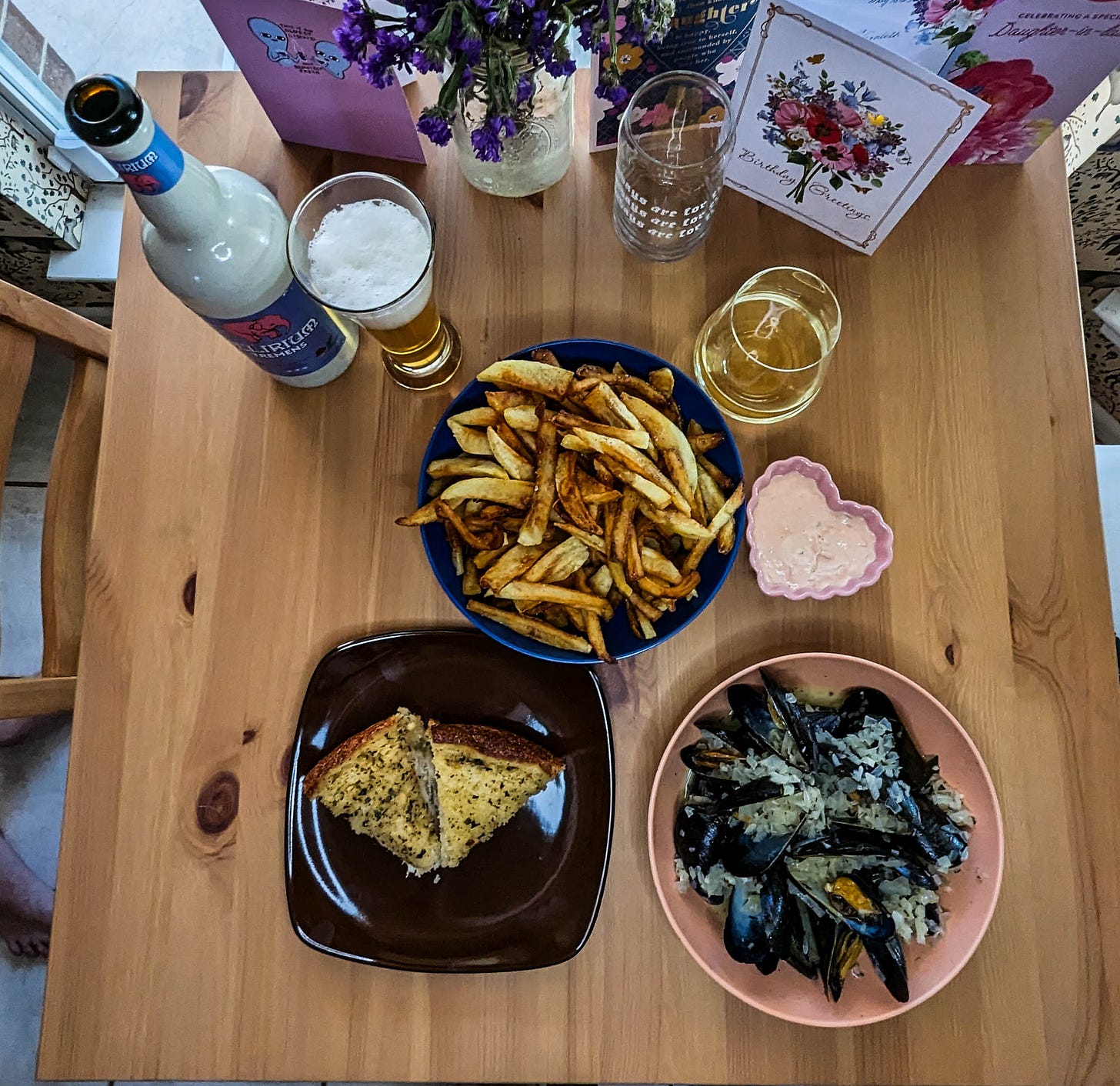
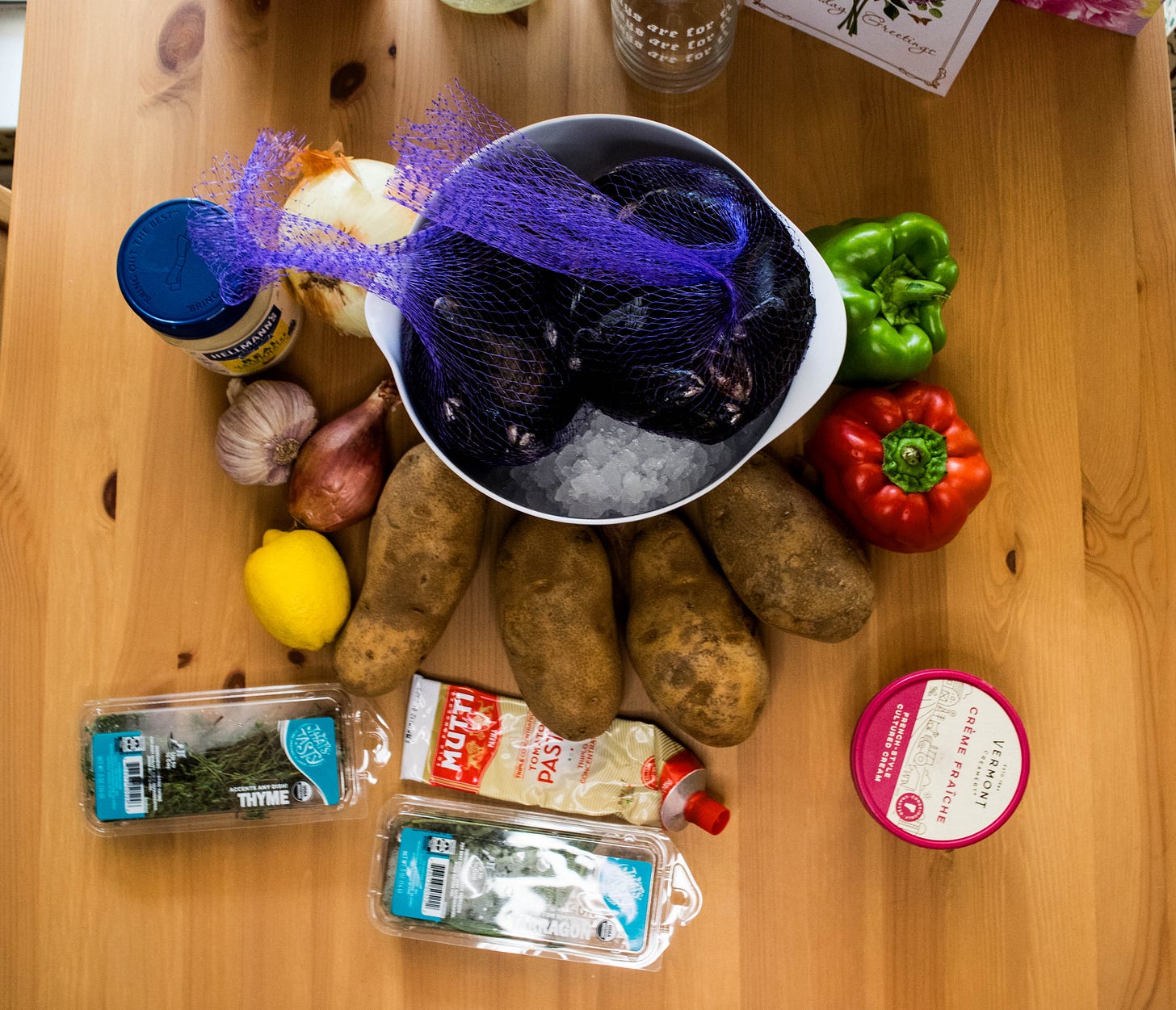


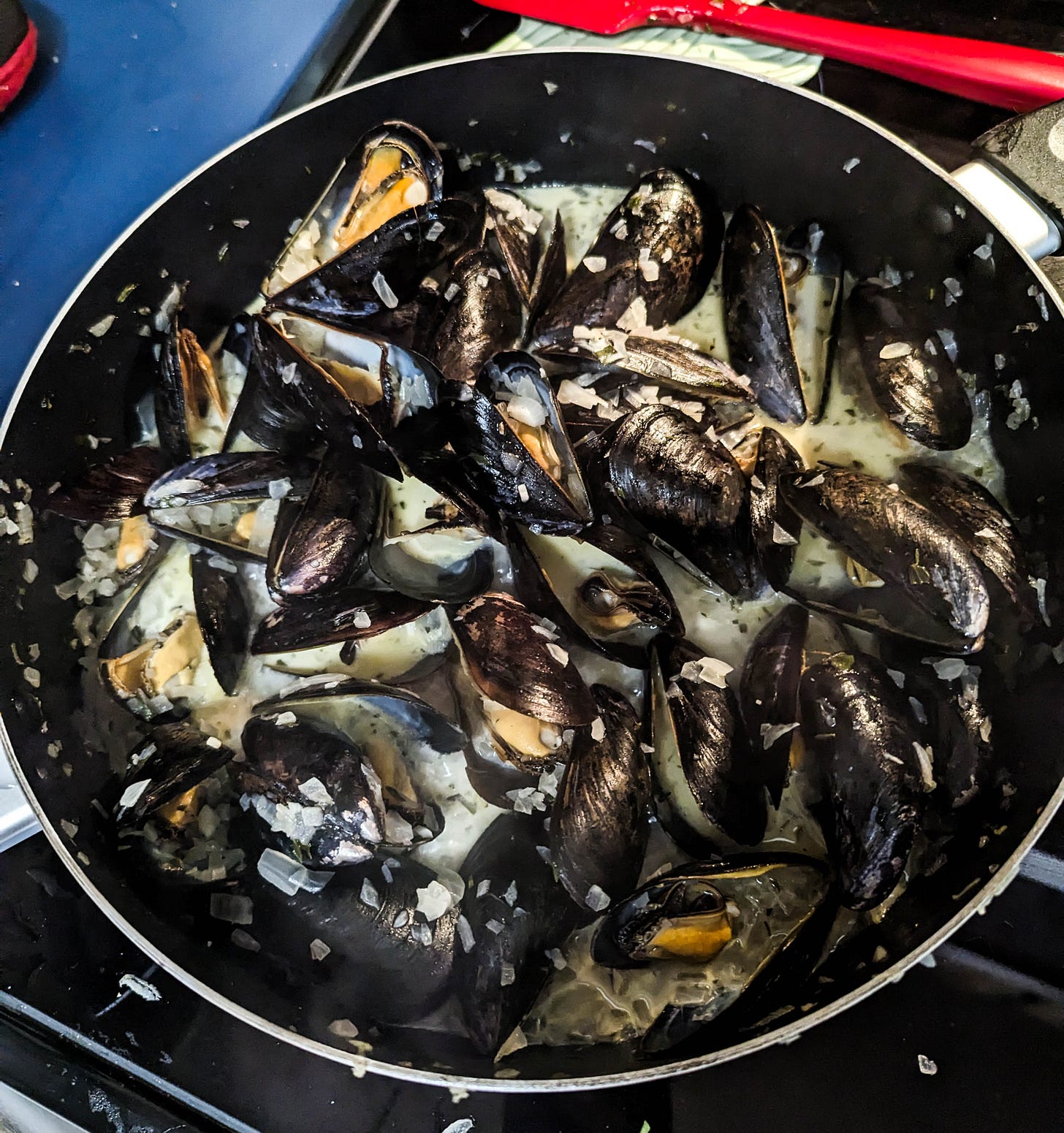
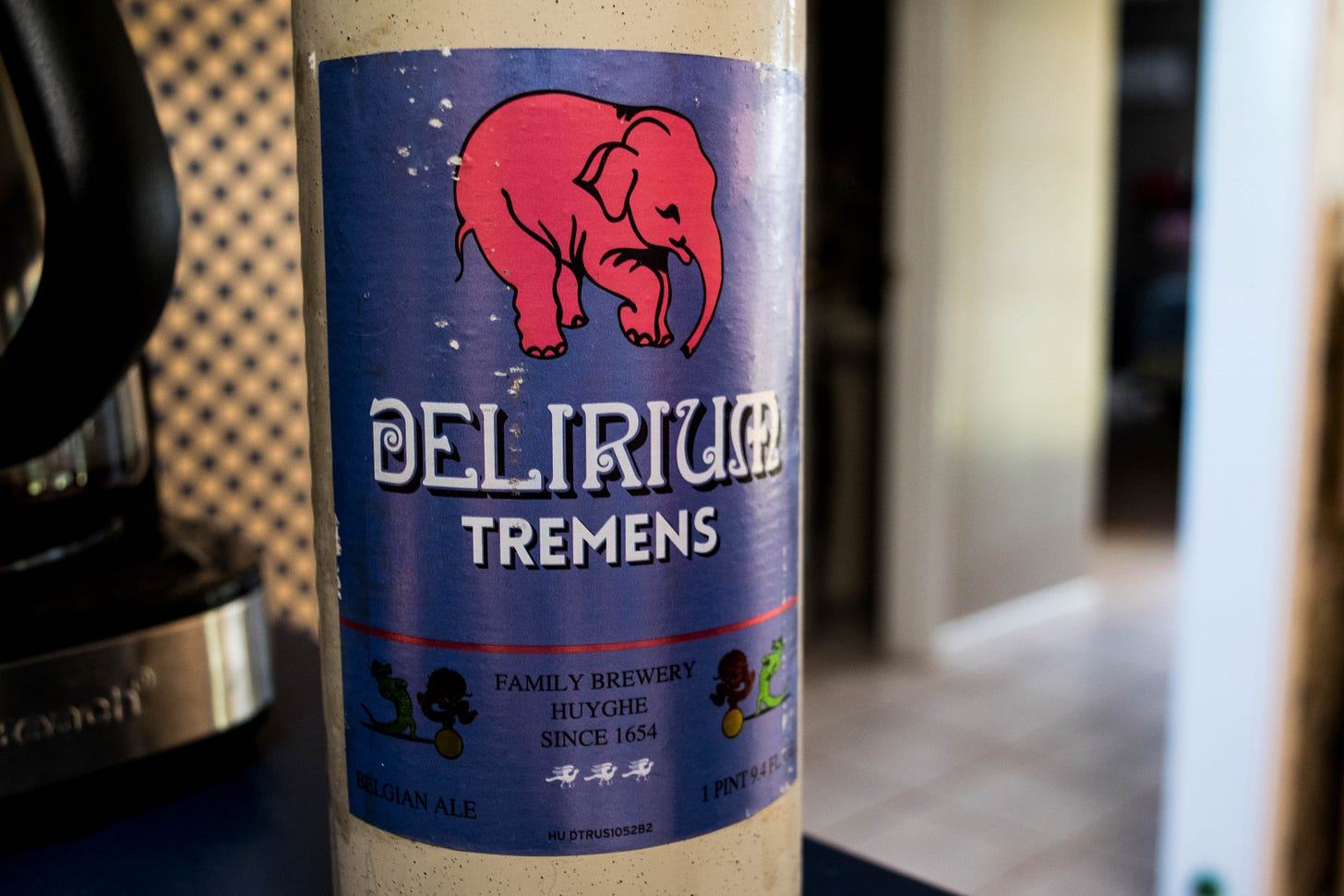
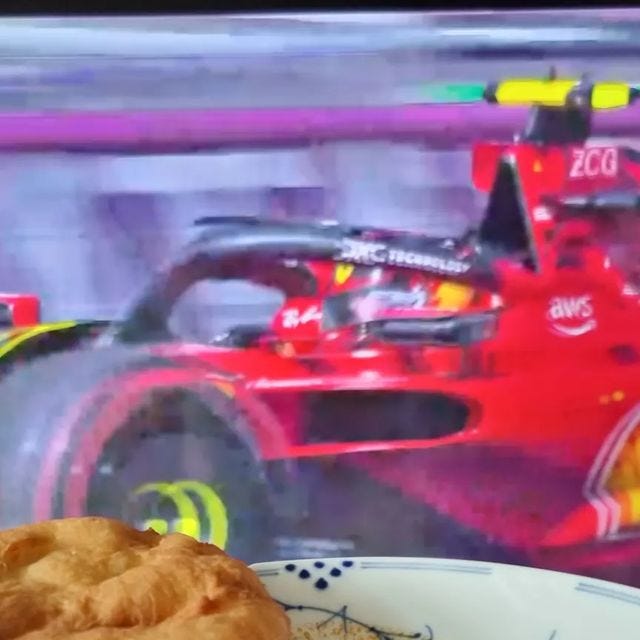

Just wondering what was the French restaurant in Montreal? (I live nearby in VT)
Wow - that was one exciting trip to Iowa! Congratulations!